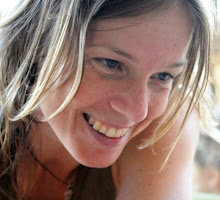"Aiki is to pull when you are pushed, and to push when you are pulled. It is the spirit of slowness and speed, of harmonizing your movement with your opponent's ki. Its opposite, kiai, is to push to the limit, while aiki never resists."
-- Takeda Sokaku
Morihei Ueshiba (O'Sensei) was the founder of aikido as we know it today, but the technical curriculum of aikido was undoubtedly most greatly influenced by the teachings of Takeda Sokaku and his system of aiki-jujutsu called Daito-ryu. The early form of training under Ueshiba was characterized by the use of atemi and a more linear approach to technique and this is what can be seen preserved in the teachings of his early students, that later founded styles like Yoshinkan Aikido and Shodokan Aikido, but also Morihiro Saito's Iwama-ryu. As Ueshiba grew older, more skilled, and more spiritual, his art also changed and became softer and more circular and he started putting a greater emphasis on what is referred to as kokyu-nage, or "breath throws" which are soft and blending, utilizing the opponent's movement in order to throw them. These techniques are rooted in the aiki-no-jutsu portions of the Daito-ryu curriculum rather than the more direct jujutsu style joint-locking techniques, hence, the circle was closed by reconnecting to this ancient wisdom.
"The secret of aiki is to overpower the opponent mentally at a glance and to win without fighting."
-- Takeda Sokaku
This peaceful approach to solving a conflict demands a lot from the practitioner, not only years and years of aikido practice in a dojo, but also a deep knowledge of oneself, involving development of a genuine inner confidence and harmony, as well as a well disciplined ego. This parallel advancement of body and mind makes the principles of aikido spread out and impregnate your approach to other people also outside of the dojo. You decrease the impact of your pride and your ego, which are the forces that makes you use kiai instead of aiki in any kind of conflict, physical as well as verbal, although fortunately verbal conflicts are more frequent for the most of us. You become permeable and smooth and not many things can really provoke you anymore. This gives a strong sense of inner freedom.
It is also this same lack of pride and ego, together with confidence and calm, that enables us to accept a technique and absorb it as uke. The ability to be in the point of contact and take the ukemi without resistance, will ultimately put you back in a ground position, or hamni, faster than if you resist and reluctantly take ukemi. Bottom line is that everything is connected and ruled by the same principles and this is the universal law of the aiki...






No comments:
Post a Comment